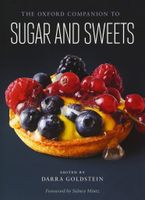The Dark Side
Published 2015
No matter where sugar was introduced, it became an object of desire, enthralling. Yet beneath the idea of allure lies the core meaning of “thrall,” which points to the darker sides of sugar. Because even as sugar pleases, it subjugates. Though sugar can be cast into marvelous forms, it has historically cast people into thralldom—not only addiction, that bondage to excess, but also slavery. The once pure notion of sweetness, considered the most perfect of virtues (
Become a Premium Member to access this page
Unlimited, ad-free access to hundreds of the world’s best cookbooks
Over 160,000 recipes with thousands more added every month
Recommended by leading chefs and food writers
Powerful search filters to match your tastes
Create collections and add reviews or private notes to any recipe
Swipe to browse each cookbook from cover-to-cover
Manage your subscription via the My Membership page
Part of
Advertisement
Advertisement


